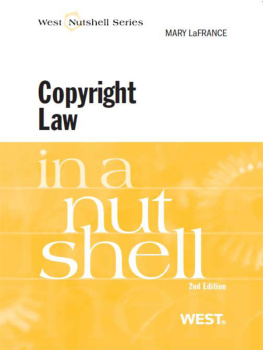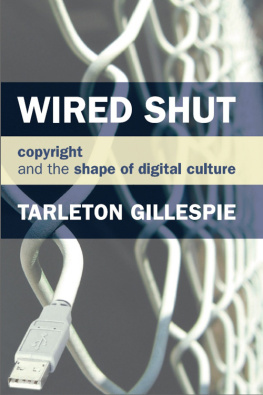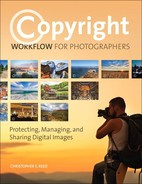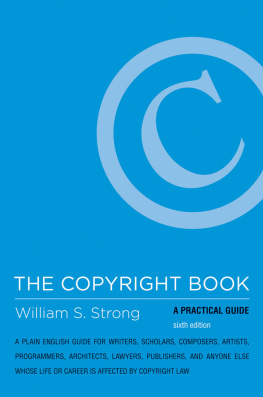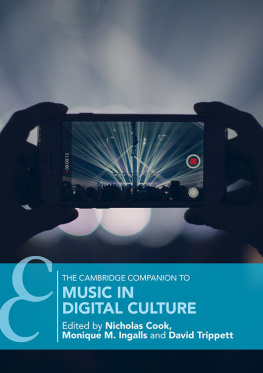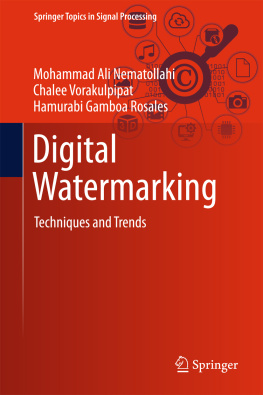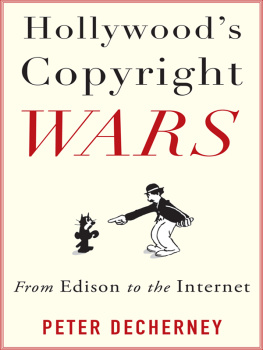The Rhetoric of Intellectual Property
Routledge Studies in Rhetoric and Communication
1. Rhetorics, Literacies, and Narratives of Sustainability
Edited by Peter N. Goggin
2. Queer Temporalities in Gay Male Representation
Tragedy, Normativity, and Futurity
Dustin Bradley Goltz
3. The Rhetoric of Intellectual Property
Copyright Law and the Regulation of Digital Culture
Jessica Reyman
The Rhetoric of Intellectual Property
Copyright Law and the Regulation of Digital Culture
Jessica Reyman

New York London
First published 2010
by Routledge
270 Madison Avenue, New York, NY 10016
Simultaneously published in the UK
by Routledge
2 Park Square, Milton Park, Abingdon, Oxon OX14 4RN
Routledge is an imprint of the Taylor & Francis Group, an informa business
This edition published in the Taylor & Francis e-Library, 2009.
To purchase your own copy of this or any of Taylor & Francis or Routledges collection of thousands of eBooks please go to www.eBookstore.tandf.co.uk.
2010 Taylor & Francis
All rights reserved. No part of this book may be reprinted or reproduced or utilised
in any form or by any electronic, mechanical, or other means, now known or hereafter invented, including photocopying and recording, or in any information storage or
retrieval system, without permission in writing from the publishers.
Trademark Notice: Product or corporate names may be trademarks or registered trademarks, and are used only for identification and explanation without intent to infringe.
Library of Congress Cataloging in Publication Data
Reyman, Jessica, 1977
The rhetoric of intellectual property : copyright law and the regulation of digital
culture / Jessica Reyman.
p. cm.(Routledge studies in rhetoric and communication ; v. 3)
Includes bibliographical references and index.
1. CopyrightUnited States. I. Title.
KF2994.R49 2009
346.7304'82dc22
2009033552
ISBN 0-203-85792-5 Master e-book ISBN
ISBN10: 0-415-99907-3 (hbk)
ISBN10: 0-203-85792-5 (ebk)
ISBN13: 978-0-415-99907-6 (hbk)
ISBN13: 978-0-203-85792-2 (ebk)
Contents
Figures
4.1 | Image from MPAAs PiracyIts a Crime. |
4.2 | Is this You? MPAAs illegal downloading campaign advertisement. |
4.3 | Parental Guidance Suggested. MPAAs illegal downloading campaign advertisement. |
5.1 | Chair image from Creative Commons Building on the Past. |
5.2 | Stock car image from Creative Commons Building on the Past. |
5.3 | Building blocks image from Creative Commons Building on the Past. |
5.4 | Denim skirt image from Creative Commons Mix Tape. |
5.5 | Denim skirt image from Creative Commons Mix Tape. |
5.6 | Scraps image from Creative Commons Mix Tape. |
5.7 | Technologies flourish image from EFFs Endangered Gizmos Campaign. |
5.8 | Technologies extinct image from EFFs Endangered Gizmos Campaign. |
7.1 | The Pyramid of Internet Piracy from MPAAs Briefing Book on Campus Digital Piracy. |
7.2 | Images from Campus Downloading Web site. |
7.3 | Headphones image from MusicUnited Web site. |
7.4 | Music store image from MusicUnited Web site. |
Acknowledgments
I wish to express thanks to the many colleagues and friends that have contributed to the creation of this book. To begin, Id like to thank those who gave advice and guidance during the inception and early stages of this project, including Laura Gurak, John Logie, and Mary Lay Schuster of the University of Minnesota, and law professor Dan Burk of the University of California, Irvine.
Id like to thank my colleagues at Northern Illinois University, especially Michael Day, Jeff Einboden, and Phil Eubanks, who, in different ways, have offered their support during the writing process. In addition, Id like to give special thanks to the students in my spring 2008 graduate course on Rhetoric, Copyright, and Digital Media, who prompted me to revisit and revise my views on the digital copyright debate in light of their insightful discussions and writings.
I am also grateful for the inspiration that came from other scholars researching and writing on intellectual property issues, including Krista Kennedy, Clancy Ratliff, Danielle DeVoss, Jeff Galin, TyAnna Herrington, Jim Porter, and countless others, whose work has been integral to my own developing thoughts on the issues. Some of these colleagues have offered supportive comments and helpful advice at key moments in this projects development. Others, in their enthusiasm and dedication to the study of copyright and textual ownership, have helped me to understand more clearly the implications of the issues for the field of rhetoric and composition. These individuals work is what drew me to this line of inquiry in the first place.
Pieces of this research were shared at the Conference on College Composition and Communication, the CCCC Intellectual Property Caucus, and the conference for the Association of Internet Researchers. Thank you to the participants there for their attention, questions, and suggestions.
Special thanks to the four anonymous reviewers of this manuscript for their help in making significant improvements to this text. Id also like to thank the Routledge Studies in Rhetoric and Communication series editor Erica Wetter and senior editorial assistant Liz Levine for their help with carrying this project through to completion.
Finally, I am grateful for my family, my husband Ryan and my daughter Jordan, for their support and understanding during all stages of the writing process. I especially appreciate their steady encouragement and unwavering confidence in my abilities, and for creating the time and space necessary for carrying this project through to completion.
A version of appeared as Property, Theft, Piracy: Rhetoric and Regulation in MGM Studios v. Grokster, Composition & Copyright: Perspectives on Teaching, Text-making, and Fair Use, Ed. Steve West-brook, SUNY Press, 2009, pp. 930.
Copyright, Authorship, and the Internet
It has now been four decades since Joseph Licklider and Robert Taylor presented one of the earliest visions of what we now know as the Internet. In 1968 they coauthored The Computer as a Communication Device, in which they predicted a global computer network of distributed intellectual resources (28) characterized by its accessibility by multiple users at disparate locations; its ability to help users share, manipulate, and locate data; as well as its facilitation of easy interactive communication among users. Licklider and Taylors important work eventually contributed to the development of ARPANET, which later became the modern Internet. Their predictions, however, did not focus only on descriptions of human-computer interaction or the technical structure for sharing bits of information across a computer network. They were also interested in human-human interaction, the social dynamics of what they coined a networked supercommunity. In the introduction to the essay, they made a provocative claim about networked communication:



